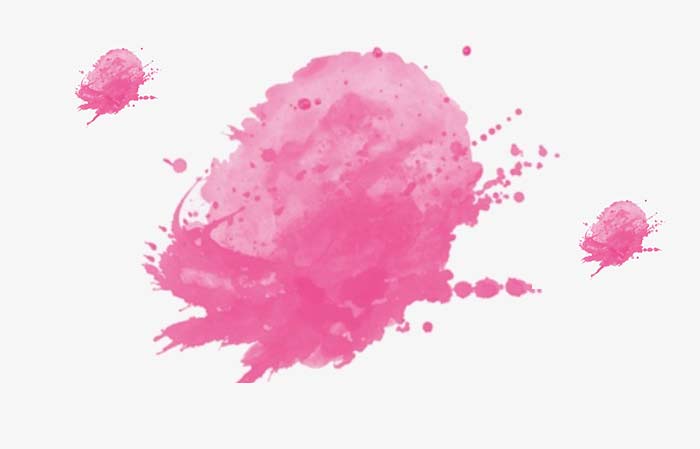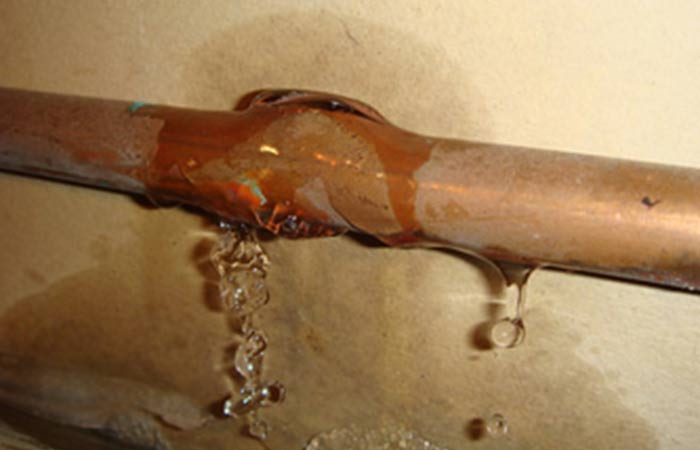Pink Ring Stains in Toilet Bowl: Causes & How to Get Rid
Markings and residue of pink in your toilet or bathroom fixtures can mean a lot of different things.
In most cases, pink stains in your toilet bowl or tank indicate the existence of bacteria that settles as a pinkish-gray film on moist surfaces. The pink can also designate iron remnants found in some well water or old pipes that bring water to your house.
To get rid of the bacteria all you need is to sock it in a good toilet cleaner or bleach for some minutes then use a soft brush to clean.
Read on to find out more about dealing with the pink discoloration and prevention measures to ensure that your toilet doesn’t get them again in the future.
What is the Pink Ring Toilet?
The pink discoloration normally appears in pale shades of colors between blue and red. It usually looks like a ring that accumulates at the water line in the bowl or tank.
Other than the toilet, the stains can be seen in many other areas such as the kitchen sink/drain, shower curtains, tubs, and heads, as well as pet bowls.
The major source of the pink discoloration is bacteria. The pink spots can also be a result of mineral deposits and leakages.
Serratia Marcescens Toilet Mold
The most common cause of the pink discoloration an airborne bacteria called Serratia Marcescens that settles as a pinkish-gray film on a moist surface such as the toilet bowl or underneath the tank.
The bacterial pink ring looks like orange or pink mold, but it’s actually not mold. Orange mold is fungus while the pink ring is a colony of airborne bacteria.
Serratia Marcescens is naturally found in soil, food or animals. The bacteria produce a characteristic pinkish-red pigment, that develops well in damp areas with moisture, dust, fats, and phosphorus-laden ingredients such as soaps, gel, human waste, shampoos, and some food products.
There is plenty of water and phosphates (from soap) in the toilet or bathroom that provide a conducive environment for the bacteria to survive.
Owing to the fact the bacteria is airborne, it can be moved to any place and it can survive as long there is moisture.

Iron & other Mineral Deposits
The other possible reason pink discoloration appears in your toilet is remnants of iron and other minerals (such as manganese, and copper) found in the piping system of the house.
The stains from mineral deposits can also be orange in color and they also collect just above the water line.
Leakages
Leakages in your plumbing system that allow moisture to escape and accumulate on different surfaces in your house can habitats for Serratia Marcescens

How to get Rid of the Pink Stains and Ring
After you have identified that indeed you have pink stains, you need to act fast and quick before the bacteria multiplies and gets worse.
Ensure to have gloves and a breathing mask on especially if you are sick. Also, open the windows or run a fan for ventilation
Method #1
The easiest way to eliminate the pink stain from bacteria is to get a bowl cleaner that contains chlorine
- Gently, pour the cleaner into the bowl
- Stir it with a brush then
- Let it sit for a few minutes
- Flush.
Method #2
Alternatively, you can try the following method if the pink stain seem stubborn
Materials Needed
- Bucket or container
- Rags
- Soft hand brush
- Vinegar
- Baking soda
- Toilet cleaner/ disinfectant
- Hot water
- Bleach
Steps
- Flush the toilet for a quick rinse and use the rag and bucket to empty the remaining water from inside the toilet bowl. You should end up with a dry toilet bowl – easy for you to view the first bend of the drain.
- Pour in the baking soda to spray over the vinegar. A foam should appear where you are spraying.
- Add vinegar into the toilet bowl making sure all the corners are attended to.
- Scrub gently with the hand brush to endure all the ends of the toilet get the mixture.
- Leave on for half an hour.
- Once back, scrub the toilet bowl gently to scrape off the pink stains that may not have come out yet.
- Flush the toilet to rinse off the mixture.
- Add some bleach and let sit for another half an hour.
- Flush the water again and check to see if the pink stains have cleared. If not, repeat until you achieve the results.
Although it is easy to do away with serratia marcescens in your bathroom and toilet, it is quite challenging to get rid of it entirely. This because it is airborne, it comes from the outside and is carried in on microscopic dust particles which means new colony is likely to grow.
This means you do not need to use aggressive cleaners and disinfectants.
Be careful not to use extremely strong scrubbers like a pumice stone or a bristle brush as they can harm the protective sealant added to protect the coating of the toilet bowl.
Aggressive cleaning can also cause the bowl to be more susceptible to the growth of mildew, mold, and other opportunistic fungi.
Method #3 Dealing with Pink Toilet Stains from Mineral Deposits
Compared to mold and bacteria, mineral deposits bind more closely with the porcelain hence harder to eliminate.
One of the most common remedy is to sock the stains in an acidic solution of lemon juice and vinegar. The solution easily dissolves the minerals and making it easy to clean them off.
Simply prepare a vinegar or lemon juice paste. You can use borax as a thickener.
Spread the paste on the stains and let the paste or solution for some time. If the stains are severe leave the paste overnight. Use a soft brush to scrub as you flush.
Preventing Pink Ring/Stains/Mold in Toilet & Shower
Following are some measures, tips and ideas to prevent the spread of the pink discoloration in your kitchen sinks, toilet and shower fixtures.
- Use chlorinated tablets to keep the toilet clean and free from bacteria.
- Wash all your bathroom liners such as curtains with hot water and disinfectant regularly to get rid of and prevent all the mold and mildew from growing, as well as any bacteria from developing.
- Wipe down your bathroom fixtures and fittings such as the bathtubs, sinks, drains, showerheads, and faucets, every time you use them. This is to avoid any dampness or unnecessary stagnant water that could encourage infestations.
- Do not be aggressive during cleaning. Always be gentle or consult the manufacturer on the best tools to use to clean the toilet effectively.
- Reseal any natural surfaces such as granite, marble, travertine, tile, and grout to keep them free from waterlogging and so that it’s easy to wipe them down as well.
- Ventilate the bathroom area to keep the room free from humidity and other dampening conditions.
- Bleach down your bathroom floor, toilet bowl, toilet tank, and your pet’s bowl as well. The bleach is an excellent disinfectant and abrasive that prevents the growth of bacteria.
- Clean up soap scum in your bathtub and shower and on the shower curtain or door.
- Flush regularly.
- Schedule regular inspections with a plumber to check for (and fix) any leaks in your plumbing.
- Avoid bathroom carpeting – Opt for a mat that can be easily cleaned instead.
- Close your bathroom windows shut while you shower. Otherwise, being an airborne bacterial species, Serratia marcescens can find its way into your bathroom from outdoors
Pink Ring in Toilet – Diabetes Sign?
The pink ring in the toilet has no direct relation to diabetes. However, diabetes does have a link to mold which thrives in sugar. Diabetes, a condition on your blood sugar levels, is where the body doesn’t adequately hold on to enough glucose but rather releases it through urine.
Hence, when you notice a re-occurrence of mold in your toilet with all other factors standard, it could mean your urine contains too much sugar meaning you may be suffering from diabetes even without your knowledge.
The link then appears in that mold infestation could be a major indication of your blood sugar levels in sweat and urine. However, the pink ring or stains are just a manifestation of bacteria, specifically, Serratia marcescens.
Is Serratia Darcescens Dangerous
This airborne bacterium should not be a major concern for healthy individuals who come into contact with it by the skin.
However, it is known to cause various ailments including urinary tract or bladder infections if it gets into your body through the eyes or open wounds. The severity and variety of these ailments grow in individuals with known health issues.
This is why you should get rid of it or carry out appropriate preventive measures before to avoid the spread of the bacterium as well as decrease exposure to it.
Recommended Further Reading